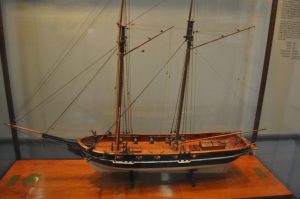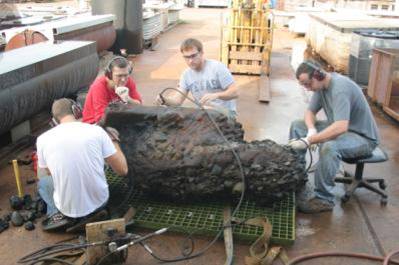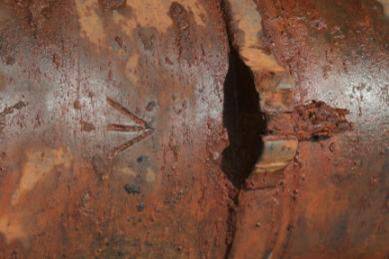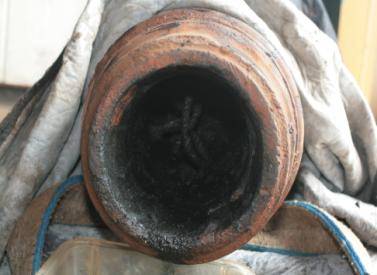CRL Reports – USS Shark
The Conservation of the 18-Pounder Carronades from USS Shark

Model of the USS Shark - Sturmvogel 66, CC BY-SA 3.0, via Wikimedia Commons
Having deemed the majority of naval ships unfit for pirate hunting due to their great draft of water, U.S. Congress, by act of May 15, 1820, appropriated $60,000 for the building of five schooners. The Shark was built in Washington D.C. in 1821 and intended for use in suppressing piracy and slavery in the West Indies. It was first commanded by Lieutenant Matthew Perry, who captured and assisted in the capture of several pirate vessels from 1822 to 1823. The Shark would be re-assigned to the Navy’s Mediterranean Squadron in 1833 and later, the Pacific Squadron in 1839, where it would make history, becoming the first U.S. war vessel to pass through the Straits of Magellan from east to west. In 1846, under the commander of Lieutenant Neil M. Howison, the Shark was dispatched to the Columbia River in Oregon to rally the American settlers with a display of the flag, survey the Oregon territory and speak with both the British and American homesteaders living there.
On September 10, 1846, in an effort to leave the mouth of the Columbia River, the Shark struck an uncharted shoal and was swept into the breakers by a swift tide. The ship was a total loss but her entire crew was saved. Shortly after the wreck, Howison received word from Native Americans that part of the hull had washed ashore twenty or thirty miles down the coast. Midshipman T.J. Simes was dispatched to visit the spot. The wreckage was found near the mouth of Shark Creek in present day Arch Cape. He reported that three carronades were adhered to a portion of the wreckage. He was able to move one of the carronades above what he thought was the high water mark, but the other two could not be salvaged due to the surf. In 1898, one of these carronades was discovered embedded in a creek on the beach, which would later become known as Cannon Beach. Over one hundred years later, in February of 2008, two more pieces of ordinance were discovered in Cape Arch, believed to have been the two carronades Simes’ left behind.
The Oregon Parks and Recreation Department removed the carronades, maintaining their waterlogged condition for shipment to Texas A&M University’s Conservation Research Laboratory.
Citation Information:
Brennan Bajdek
2011, The Conservation of the 18-Pounder Carronades from USS Shark, Conservation Research Laboratory Research Report #15, World Wide Web, URL, , Nautical Archaeology Program, Texas A&M University.


























